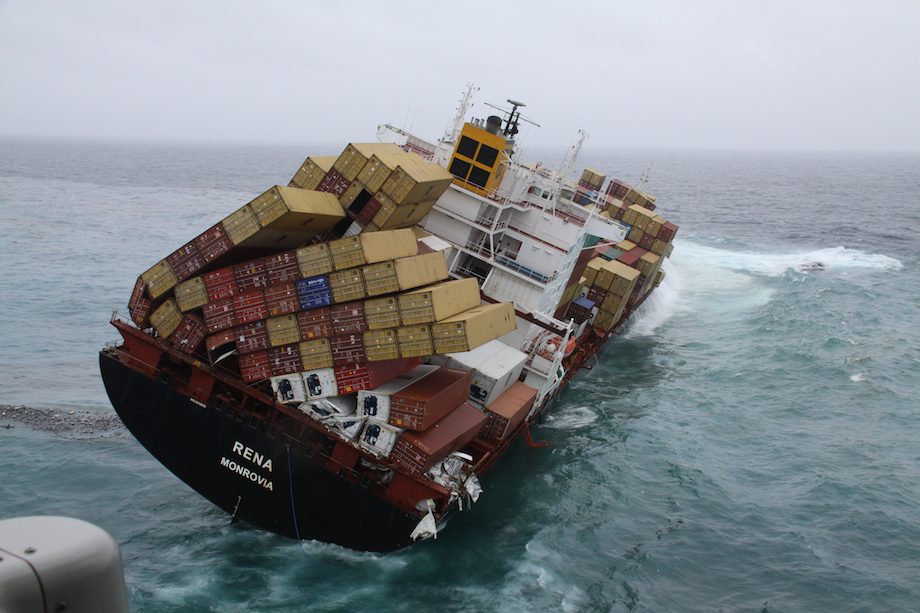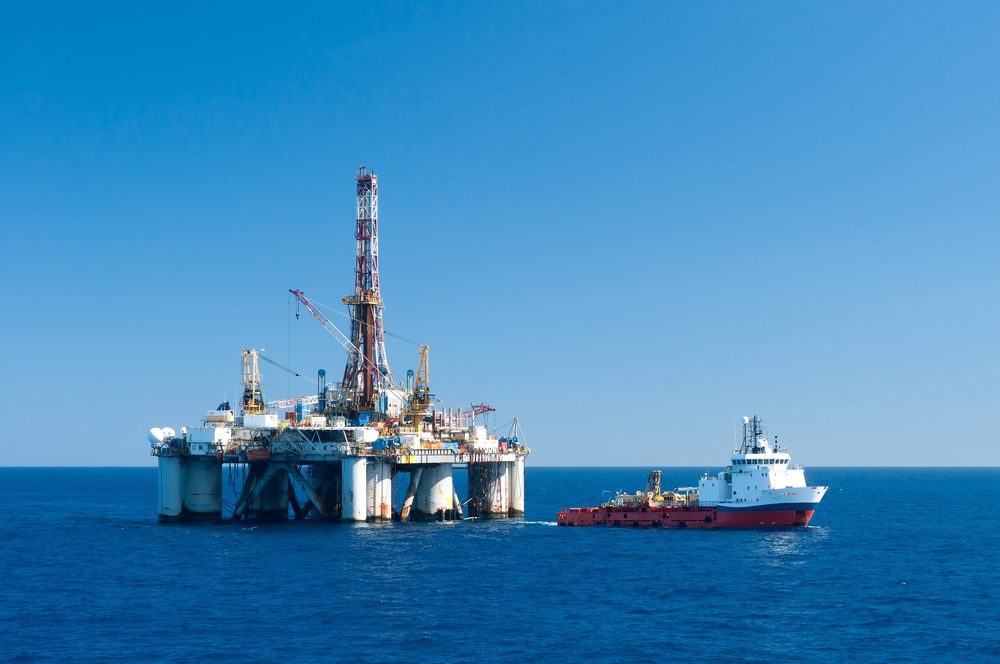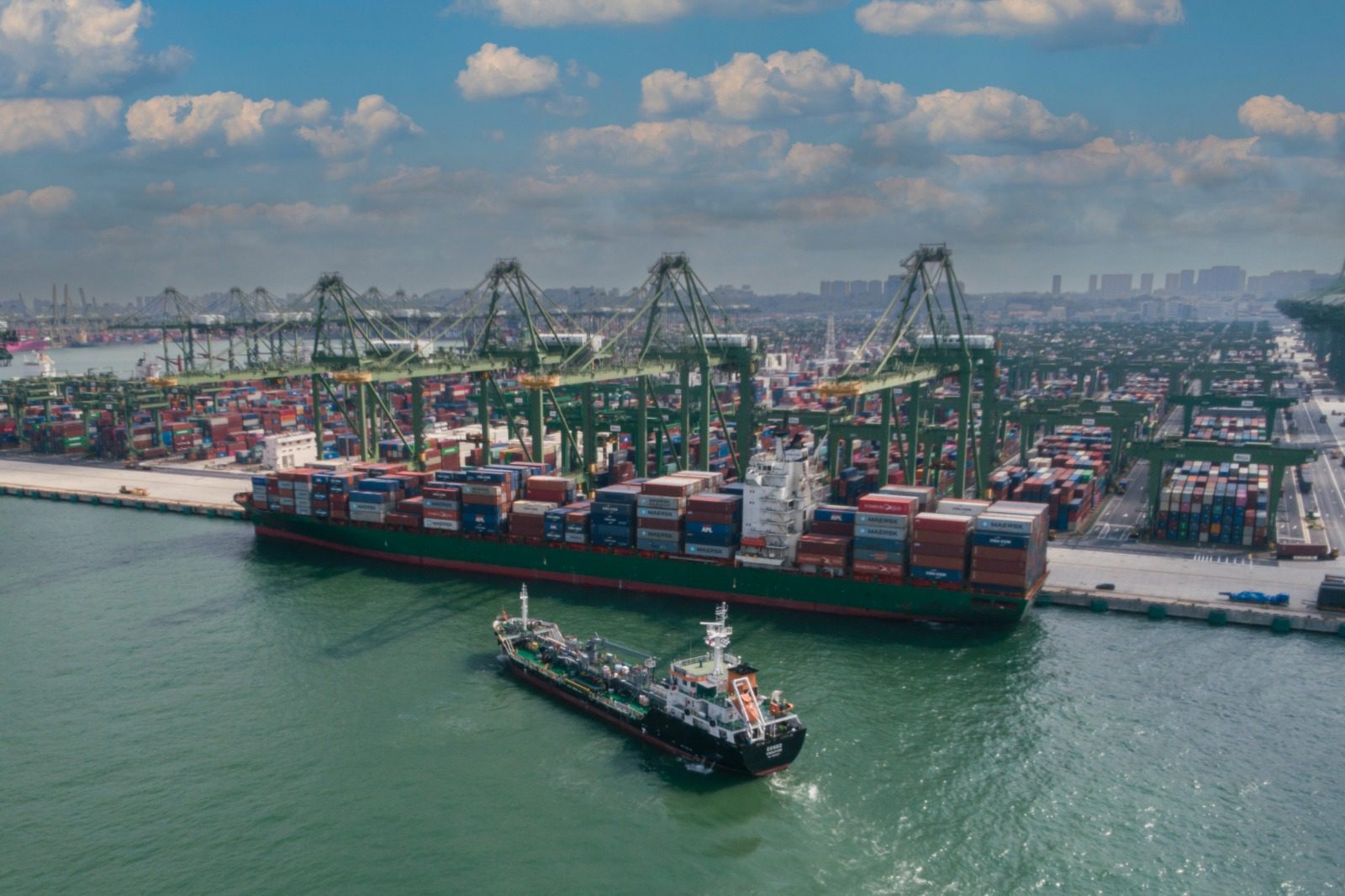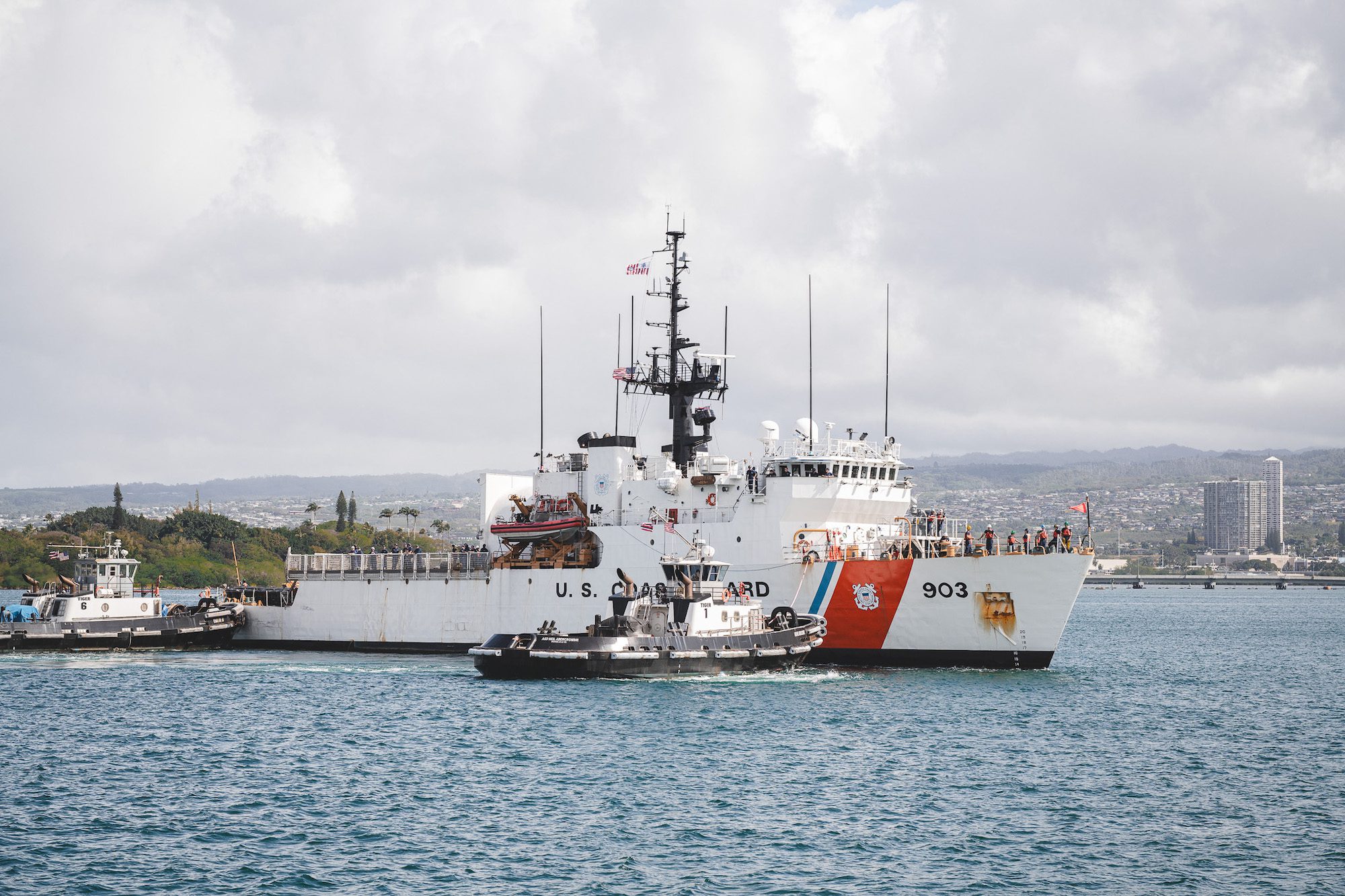The MV Rena lost an estimated 900 containers when it ran aground and broke up off the coast of New Zealand in October 2011. Photo courtesy Maritime New Zealand
The owners of the MV Rena will be able to abandon what remains of the shipwreck on New Zealand’s Astrolabe Reef but will need to pay for ongoing costs under a strict court order.
The ruling was handed down Friday by panel of Commissioners following a five-week hearing that ended last October to determine whether Rena’s owner, Diana Shipping, could abandon the remains of the wreck on the reef or if they should be cleaned up.
In the ruling, the Commissioners granted consent to “dump” the remains of the Rena and “discharge” any harmful substances or contaminants from the remains provided the owners pay for the management of the wreck for the next 20 years through a NZ$6.35 million cash bond set up by the owners and NZ$5 million from insurer the Swedish Club.
The MV Rena ran aground on Astrolabe Reef in October 5, 2011 with over 1,300 containers and 1,700 tons of heavy fuel oil in what has been called the worst maritime environmental disaster in the New Zealand’s history.
The incident sparked a massive clean-up effort initially focussed on the recovery of containers, oil, and other contaminants, even as the ship continued to break-up in the months that followed the initial grounding. An exhaustive salvage effort has continued to remove as much of the wreckage as possible, although a large debris field remains at the site.
In early 2014, Daina Shipping lodged a resource consent application with the local authorities with the Bay of Plenty Regional Council seeking permission to abandon sections of the wreck and associated debris in place on the reef, and also requesting that the application be sent to New Zealand’s Environment Court for final decision. The Regional Council agreed to defer the decision with the recommendation that even though the full removal of the wreckage was technically possible, it was not feasible as it posed unnecessarily high risks to health and safety, as well as the environment.
A final report released in 2014 into causes and circumstances of the grounding found that it was the failure of the master and crew to follow proper voyage planning, navigation and watchkeeping practices and the ship manager’s insufficient oversight of vessel’s safety management system that led to the grounding.
The ongoing management of the wreck site is to be carried by Bay of Plenty Regional Council.
Unlock Exclusive Insights Today!
Join the gCaptain Club for curated content, insider opinions, and vibrant community discussions.

 Join The Club
Join The Club













